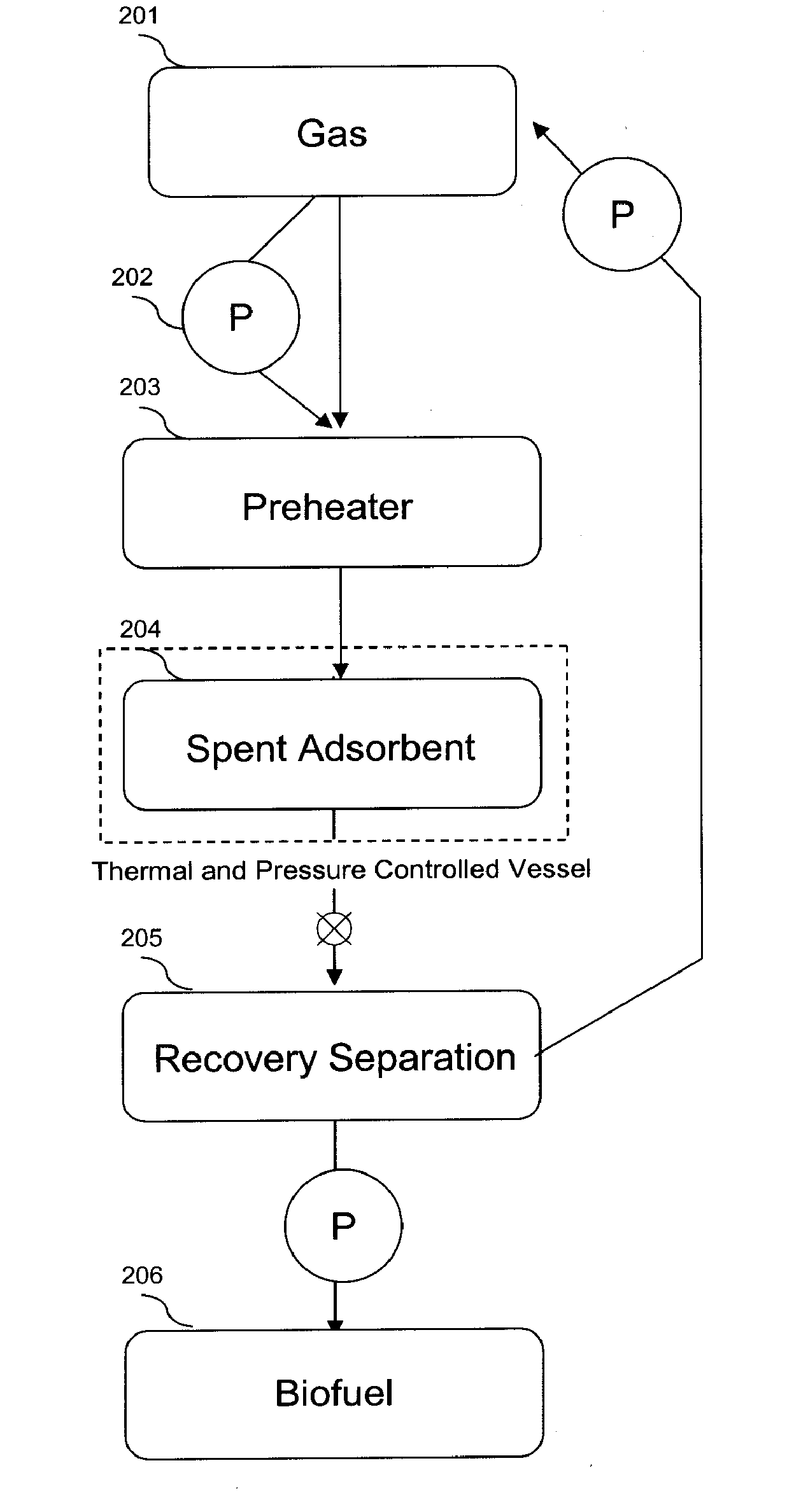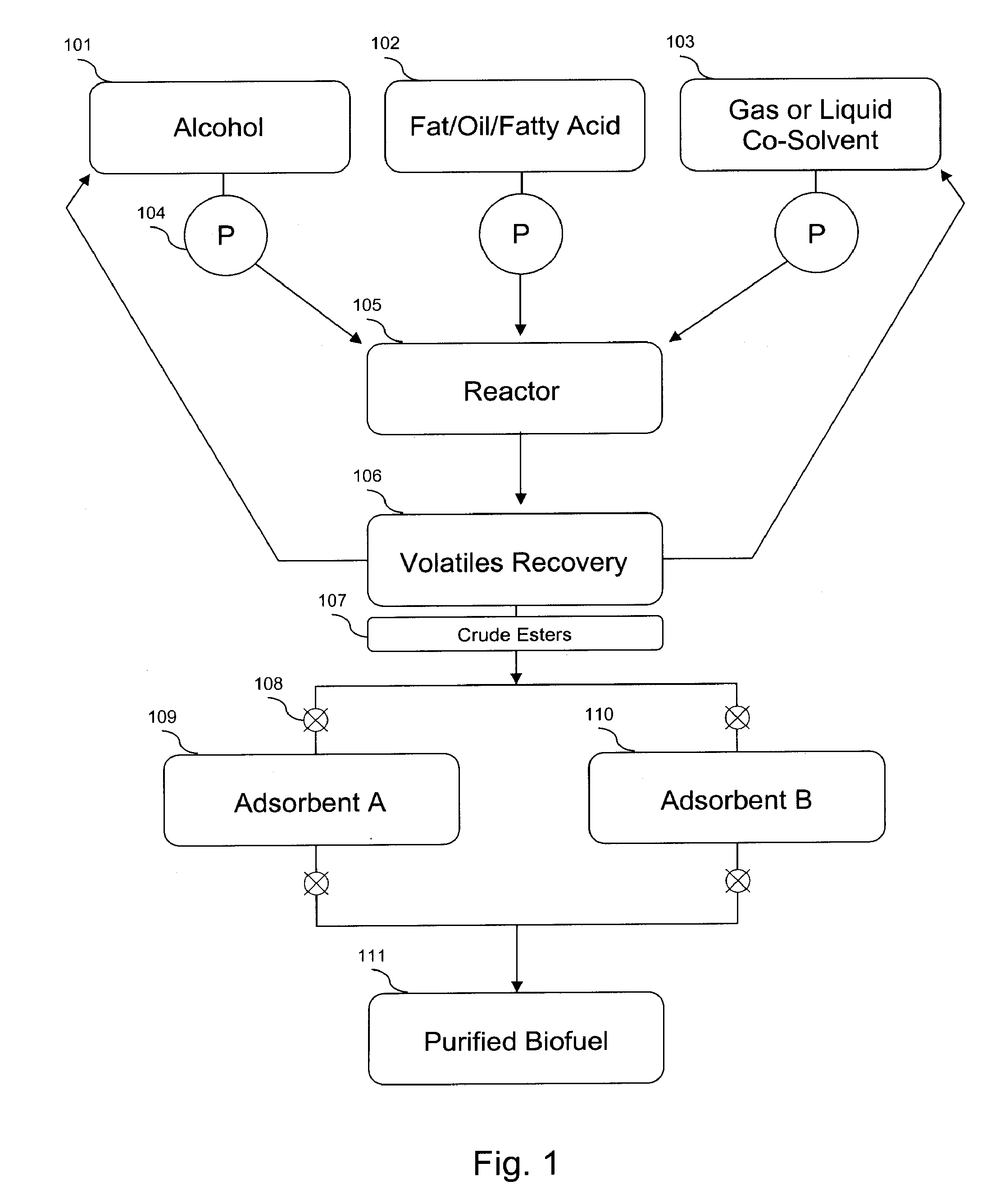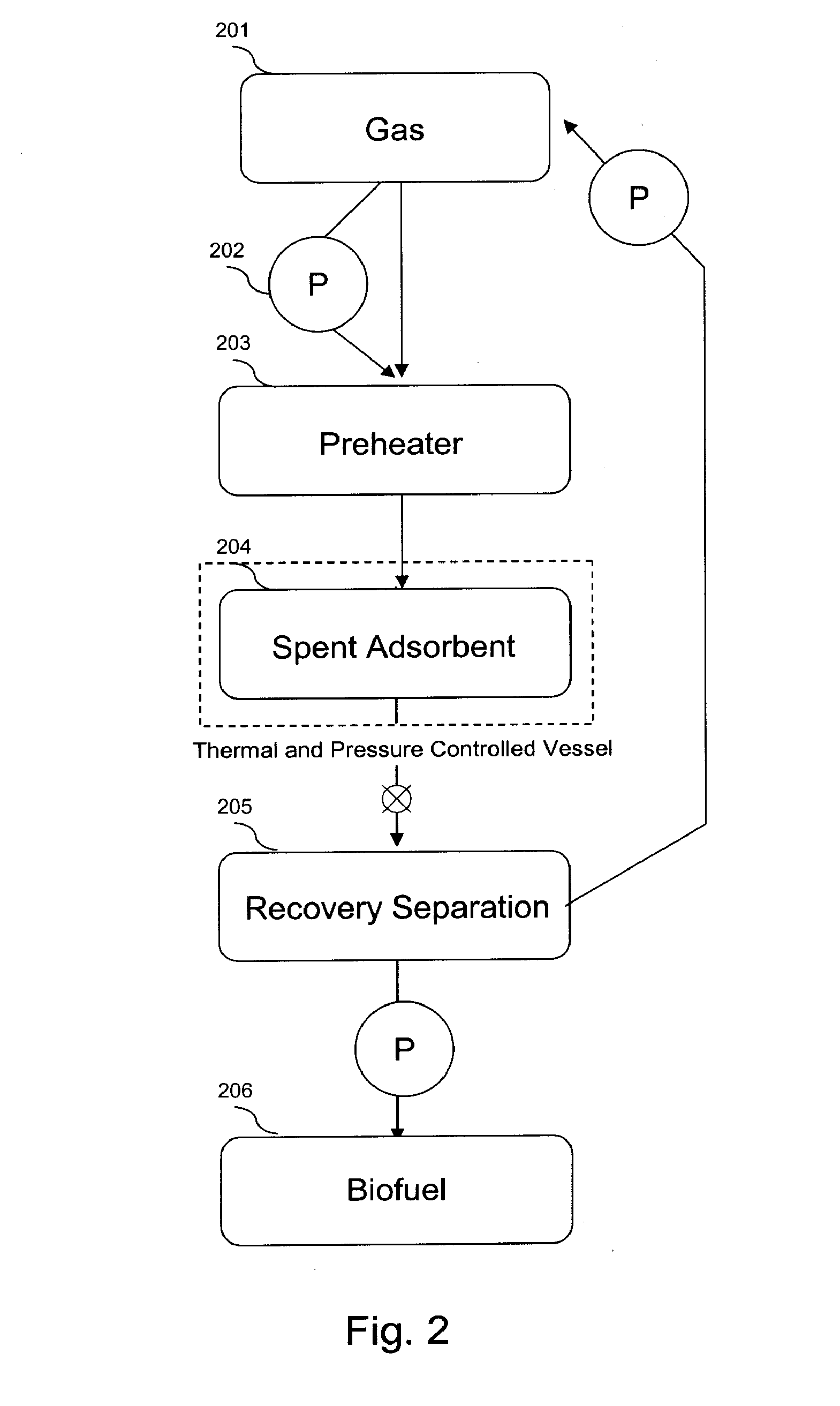System for production and purification of biofuel
a biofuel and ester technology, applied in the direction of physical/chemical process catalysts, other chemical processes, separation processes, etc., can solve the problems of inability to reactivate, compound removal is particularly difficult, and the product of adsorbent products becomes saturated or otherwise permanently fouled
- Summary
- Abstract
- Description
- Claims
- Application Information
AI Technical Summary
Benefits of technology
Problems solved by technology
Method used
Image
Examples
example 1
Adsorption of Glycerol Contaminants on Silicon Dioxide
[0045]This Example demonstrates the ability of amorphous silicon dioxide to adsorb contaminating glycerol from a typical fatty acid methyl ester “biodiesel” stream.
[0046]Glycerol-saturated sheep tallow methyl ester, prepared by alkali catalyzed transesterification, was passed through a silica preparative column (Strata 83-S012-HBJ) that consisted of a 3 ml polypropylene tube containing 500 mg of 70 A 55 um amorphous silica, and successive eluate samples were collected (total volume of 26 ml).
[0047]The glycerol content of the starting material and samples of eluate was measured using the spectroscopic technique of Bondioli and Bella, European Journal of Lipid Science and Technology, vol. 107, p. 153 (2005), which employs periodate oxidation of glycerol to formaldehyde, condensation with ammonia and 2,4-pentanedione, followed by spectrophotometric analysis with a sensitivity of 2 ppm glycerol.
[0048]The results of the analyses are p...
example 2
Adsorption of Glycerol and Monoglycerides Contaminants on Silicon Dioxide
[0049]In order to test the ability of a metal oxide adsorbent to remove glyceride contaminants the following experiment was conducted.
[0050]To a borosilicate glass 10 ml dispensing pipette was added a small plug of quartz wool followed by approximately 3 grams of Davisil silica (60 A pore size, 550 m2 / g surface area, 60-200 um particle size, 430 g / l density). A mixture of fatty acid methyl esters, produced from the reaction of nearly equivalent volumes of canola oil and methanol under supercritical conditions was added to the headspace of the pipette and allowed to percolate the bed under applied nitrogen pressure of 40 kPa. The ester mixture was replenished as required in order that 20 ml of eluate could be collected.
[0051]Samples of 0.1 gram of the starting material and the eluate were silated with 0.5 ml of a 9:3:1 solution of pyridine:hexamethyldisilazane:timethylchlorosilane (30 minutes, 75° C.) then were ...
example 3
Adsorption of Free Fatty Acid on Aluminum Oxide
[0055]In this Example, the removal of free fatty acids was attempted. Fatty acids are a common contaminant resulting from the production of fatty acid alkyl esters via supercritical processes. They co-distill during traditional purification regimes and are particularly challenging to reduce to levels acceptable by international standards (acid number).
[0056]The adsorption capacity of activated alumina was determined using a glass chromatography column with 8 mm inside diameter and 200 mm length, containing 4.5 milliliters of Camag 507 neutral alumina (60 Angstrom pore diameter, 40-160 μm particle size, density 920 μl.) A crude mixture of fatty acid methyl esters (“biodiesel”), produced from the non-catalyzed reaction of roughly equal volumes of methanol and used cooking oil under supercritical conditions) was used to determine efficacy of contaminant removal. Using the silation and GCMS analysis methods of Example 2, the crude ester mix...
PUM
| Property | Measurement | Unit |
|---|---|---|
| Temperature | aaaaa | aaaaa |
| Temperature | aaaaa | aaaaa |
| Pressure | aaaaa | aaaaa |
Abstract
Description
Claims
Application Information
 Login to View More
Login to View More - R&D
- Intellectual Property
- Life Sciences
- Materials
- Tech Scout
- Unparalleled Data Quality
- Higher Quality Content
- 60% Fewer Hallucinations
Browse by: Latest US Patents, China's latest patents, Technical Efficacy Thesaurus, Application Domain, Technology Topic, Popular Technical Reports.
© 2025 PatSnap. All rights reserved.Legal|Privacy policy|Modern Slavery Act Transparency Statement|Sitemap|About US| Contact US: help@patsnap.com



